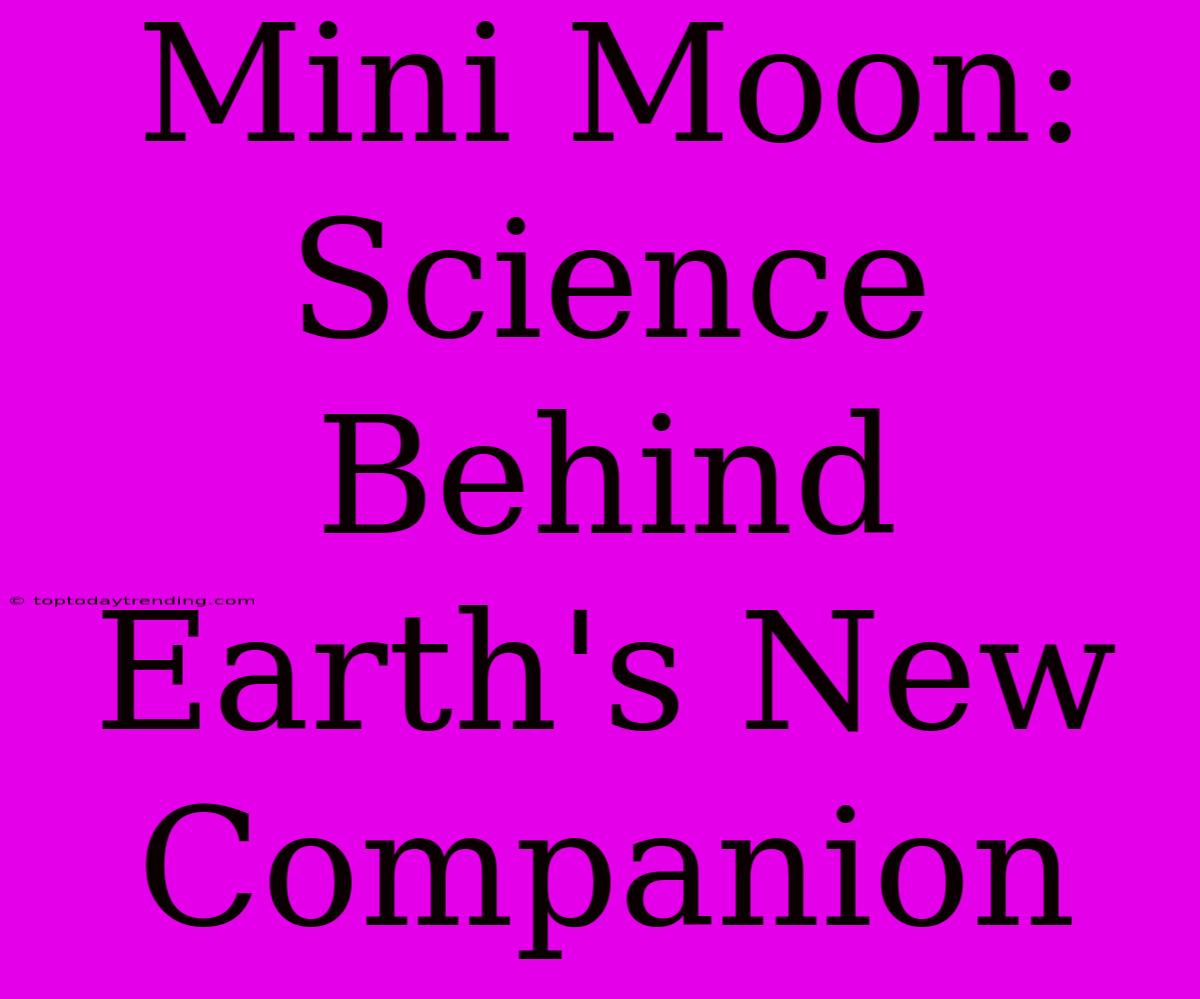Mini Moon: Science Behind Earth's New Companion
The cosmos is full of surprises, and recently, astronomers have been buzzing about a new celestial neighbor – a mini moon orbiting Earth. This fascinating discovery has sparked curiosity and excitement among space enthusiasts, fueling questions about its origins, composition, and the impact it might have on our planet.
What is a Mini Moon?
A mini moon, also known as a temporary natural satellite, is a small asteroid or comet that gets temporarily captured by Earth's gravity. Unlike our permanent moon, these mini moons don't orbit Earth for long, typically staying for a few months or even just a few days before they escape back into space.
The Discovery of Earth's New Companion
In February 2020, astronomers detected a new mini moon orbiting Earth. This object, designated 2020 CD3, was only about 1.9 to 3.5 meters in diameter – roughly the size of a car! Its discovery was a testament to the advancements in astronomical observation techniques, specifically, the use of ground-based telescopes equipped with sophisticated sensors.
The Science Behind Mini Moons
While mini moons are fascinating, understanding their existence requires delving into the science behind their formation and interactions with Earth.
1. Capture and Escape:
Mini moons are typically captured from the Near-Earth Asteroid Belt, a region between Mars and Jupiter populated by asteroids. The intricate dance of gravity, with its pull from both the Sun and Earth, plays a crucial role in the capture process. When an asteroid gets close enough to Earth, it can be pulled into a temporary orbit, becoming a mini moon. However, the Sun's gravity eventually pulls it back out, causing it to escape.
2. Composition and Characteristics: The composition of mini moons varies significantly. Some are rocky, while others might be icy, depending on their origin. Their small size, coupled with the challenges of observing them, makes it difficult to determine their exact composition.
3. Impact on Earth: The chances of a mini moon impacting Earth are extremely slim. Their small size and short orbital periods generally mean they pose no immediate threat. However, their presence can be a valuable opportunity for scientists to study the composition and characteristics of Near-Earth objects.
Significance of Mini Moons
The discovery and study of mini moons hold significant scientific value:
- Understanding Near-Earth Objects: Mini moons offer a unique window into the population of Near-Earth objects, providing valuable data about their composition, trajectories, and the potential threats they might pose.
- Exploring Our Solar System: Studying these temporary satellites helps scientists understand the dynamics of the solar system, including the forces that govern the movement of celestial bodies.
- Advancement in Observation Techniques: The discovery of 2020 CD3 underscores the progress made in observational astronomy. It showcases the capabilities of ground-based telescopes and the potential for detecting even smaller objects in the future.
Conclusion
Mini moons, like the one discovered in 2020, are fleeting companions, reminding us of the dynamic nature of the universe and the boundless possibilities of celestial exploration. As scientists continue to observe and study these temporary satellites, we can expect further discoveries and a deeper understanding of the cosmos and our place within it.

